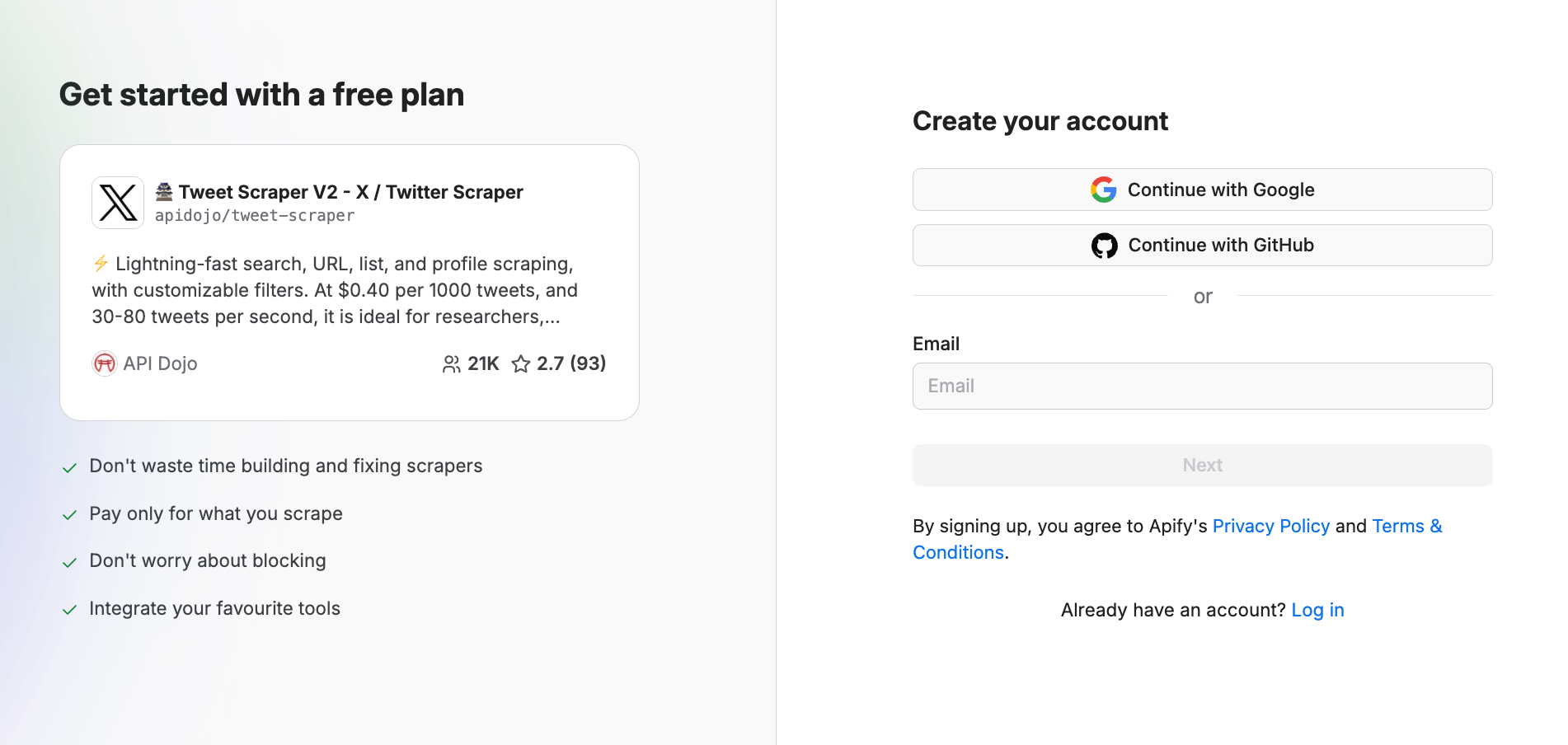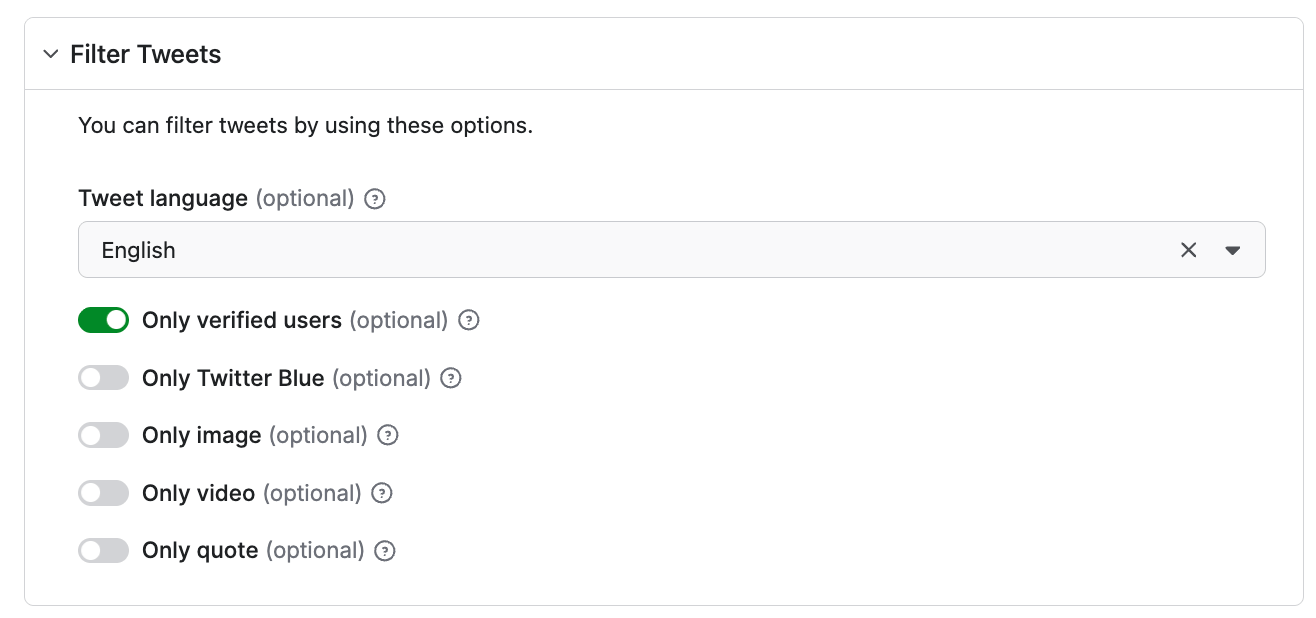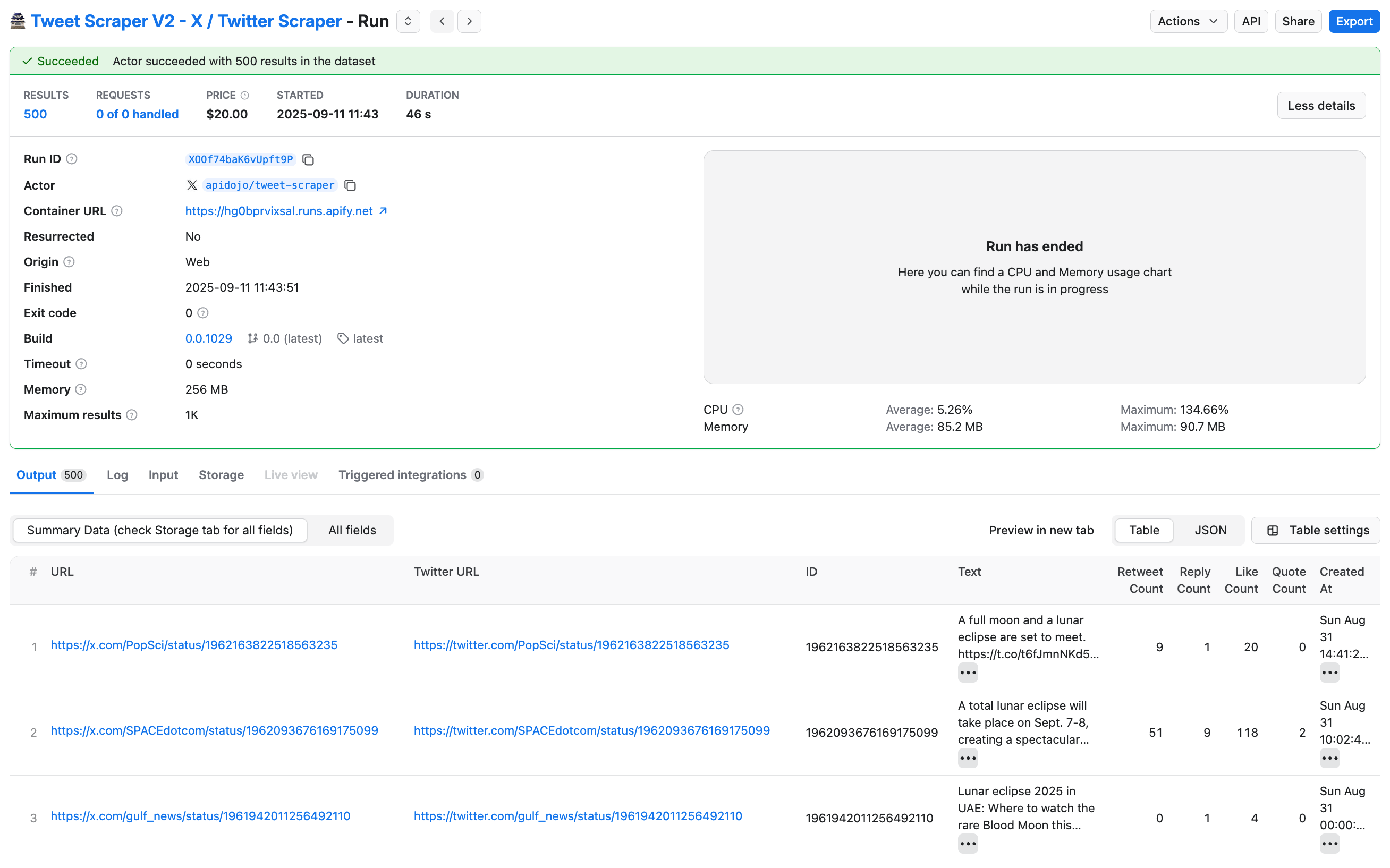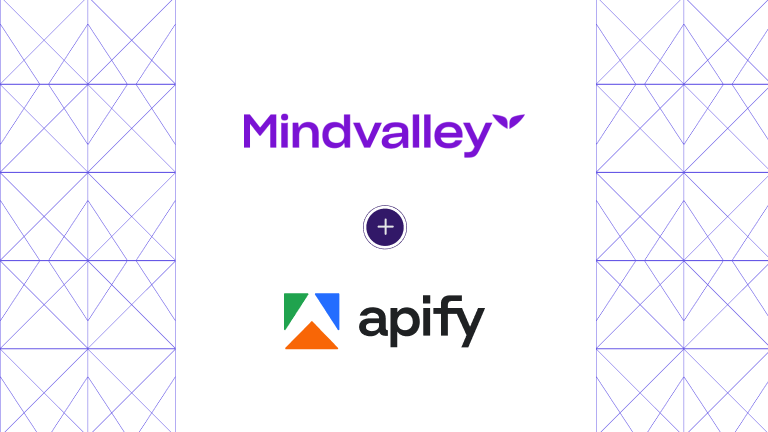If you want to collect and download tweets for research, monitoring, or analytics, the official X API might seem like the obvious solution: it's well-documented and supported directly by the platform. But once you look closer, you come across two major limitations:
- The access is gated behind an approval process - you must apply for a developer account, wait for manual review, and create an app before you can even run your first request.
- The pricing is steep: the Free tier is capped at scraping 100 tweets per month, while the Basic plan costs $200 per month for only 15,000 tweets.
With Twitter scrapers created by the developer community and available on Apify Store, you don’t have to worry about the application process or complex setups. Plus, as a Starter Plan subscriber, you’ll pay only $0.40 for 1,000 tweets.
This guide will teach you how to use the Tweet Scraper V2 – X/Twitter Scraper to download tweets from any public Twitter profile in 4 easy steps.
Step-by-step guide to scraping Twitter/X in 2025
Step 1. Go to Tweet Scraper V2 - X / Twitter Scraper
Click the Try for free button to sign up for a free Apify account and set up the scraper.

If you don’t have an Apify account yet, it’s easy to sign up with your GitHub or email account from any provider. You’ll enter Apify Console, a workspace to run or build web scraping tools.

Step 2. Choose your search terms and filters
Tweet Scraper V2 - X / Twitter Scraper supports start URLs, search terms, Twitter handles, and conversation IDs as starting points. To make things easier, we’ll go with search terms: lunar eclipse 2025 and blood moon.

This scraper offers additional features, such as narrowing down your run to verified users, or a specific content type such as image or video. In this case we’ll extract tweets posted by verified users only.

Step 3. Run the scraper by clicking Start
Once you’re all set with the search terms and options, hit the Start button. The scraper will begin data extraction from Twitter/X. Once the status changes from Running to Succeeded, you’ll be able to preview and download your dataset.

Step 4. Preview and download your data
Click on the Export button to download your data in a preferred format, including JSON, CSV, and Excel.
The scraper has extracted tweets along with the Twitter/X URLs, text, like count, and more. You can customize your export and exclude fields you’re not interested in, reducing the information noise:

That’s it, you’re done. Now that you know how it works, you can give it a go yourself. Find the Tweet Scraper V2 - X / Twitter Scraper on Apify Store, choose your search terms, and download your data in a format of your choosing.
Using your downloaded tweets
Extracting data from Twitter can be handy for a variety of purposes. Here are five ideas for how you could use this data:
- Sentiment analysis on trending topics. Analyze the sentiment of tweets related to trending hashtags or topics. You can use natural language processing (NLP) techniques to classify tweets as positive, negative, or neutral. This can help understand public opinion and reactions to current events, products, or campaigns.
- Social network analysis. Examine the connections and interactions between different Twitter users. Identify key influencers within specific communities by analyzing metrics such as the number of followers, retweets, and mentions.
- Brand monitoring and competitive analysis. Track mentions of your brand or competitors over time. Analyze the frequency and sentiment of these mentions to understand brand perception and compare it against competitors. This can provide insights into market positioning and identify areas for improvement or new opportunities.
- Topic modeling and trend prediction. Use topic modeling algorithms (like LDA) to identify common themes and topics discussed within your dataset. Combine this with time series analysis to predict future trends and interests based on historical data. This can be particularly useful for content creators and marketers to stay ahead of emerging trends.
- Customer feedback and product improvement. Collect tweets related to specific products or services and analyze the feedback. Categorize the data into different aspects (e.g., product features, customer service, pricing) to identify common issues or areas of praise. This feedback can be great for improving products or services and addressing customer concerns.
Need more Twitter scrapers?
The scraper described in this post is a community-created Actor published on Apify Store by an independent developer. If you want to learn how to publish and monetize your own solutions, check out our docs on creating and monetizing Actors.
FAQ
What kind of data can I get from tweets?
Scrapers can return tweet text, timestamps, follower counts, author info, like/retweet counts, media URLs, and referenced/quoted tweets. Please note that scraped data may be incomplete or inconsistent if tweets are hidden, deleted, or restricted.
Do I need a developer account to scrape Twitter?
No, you don’t need a developer account to scrape. You need a developer account if you want to use the official API, which requires an application and an approval process.
What’s the difference between scraping and using the official API?
Scraping pulls raw data from the public web interface (HTML pages, internal requests), while the official API gives structured data (JSON) through documented endpoints. Scraping is quicker to start and can bypass application requirements. The API is stable and supported - but requires approval and paid plans for any meaningful volume.








